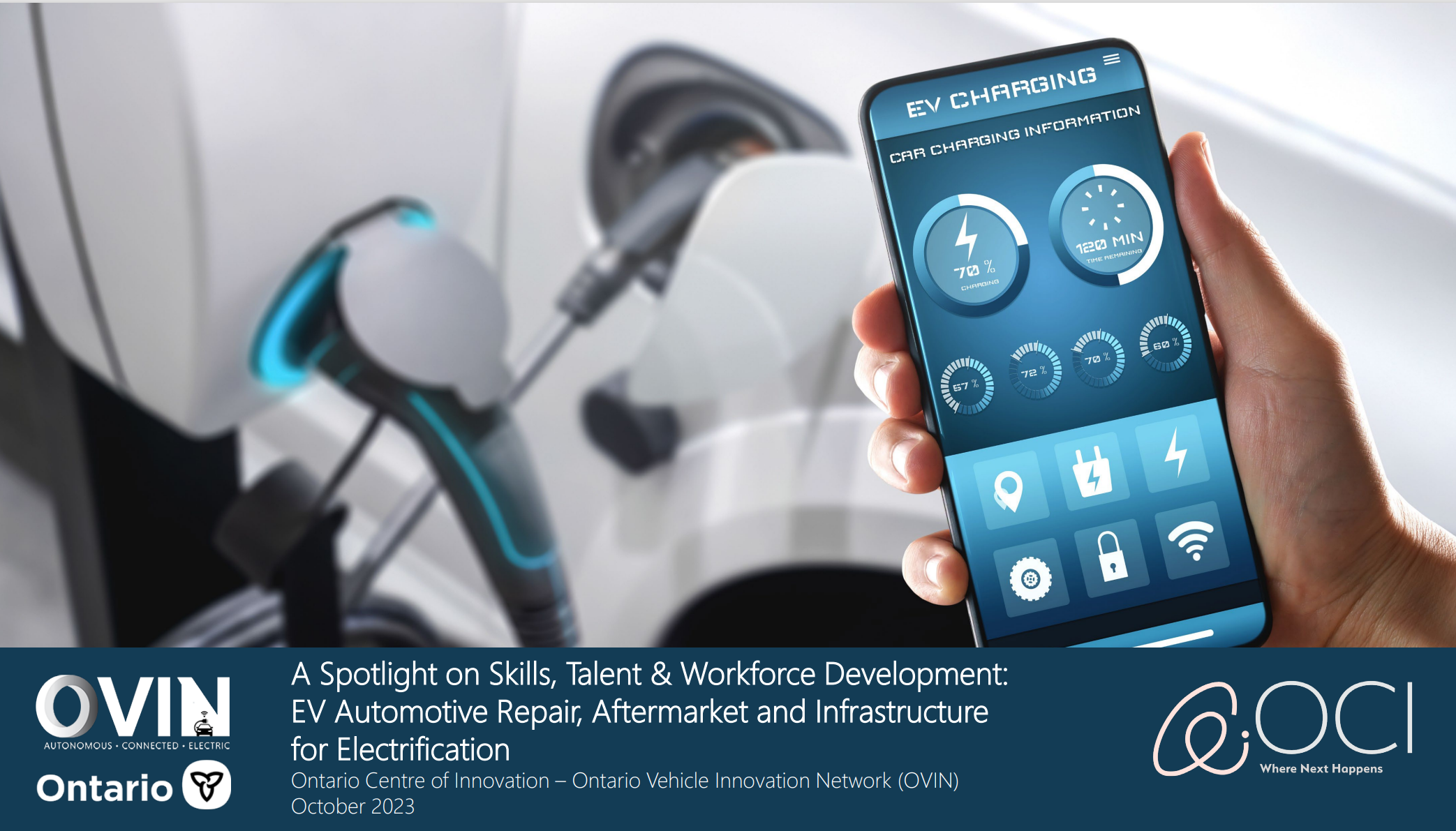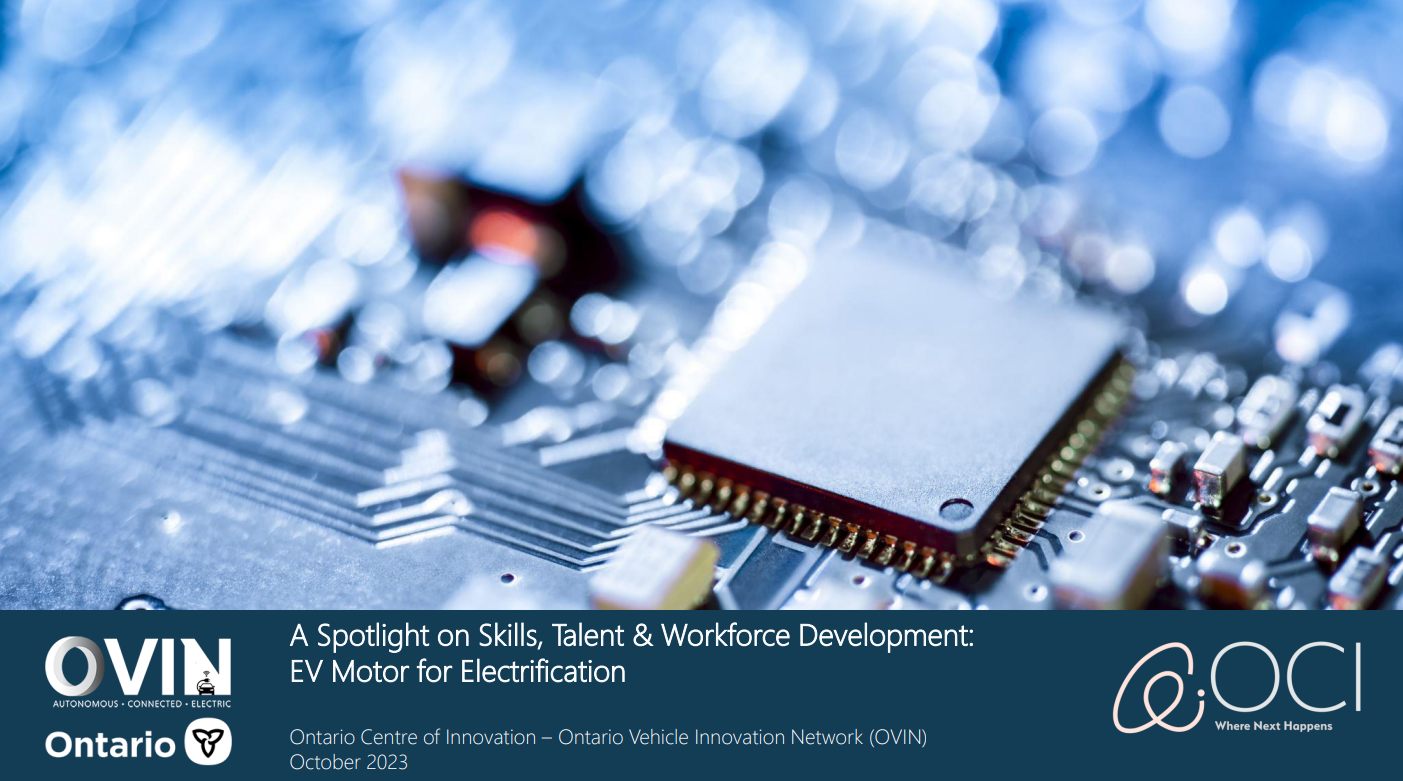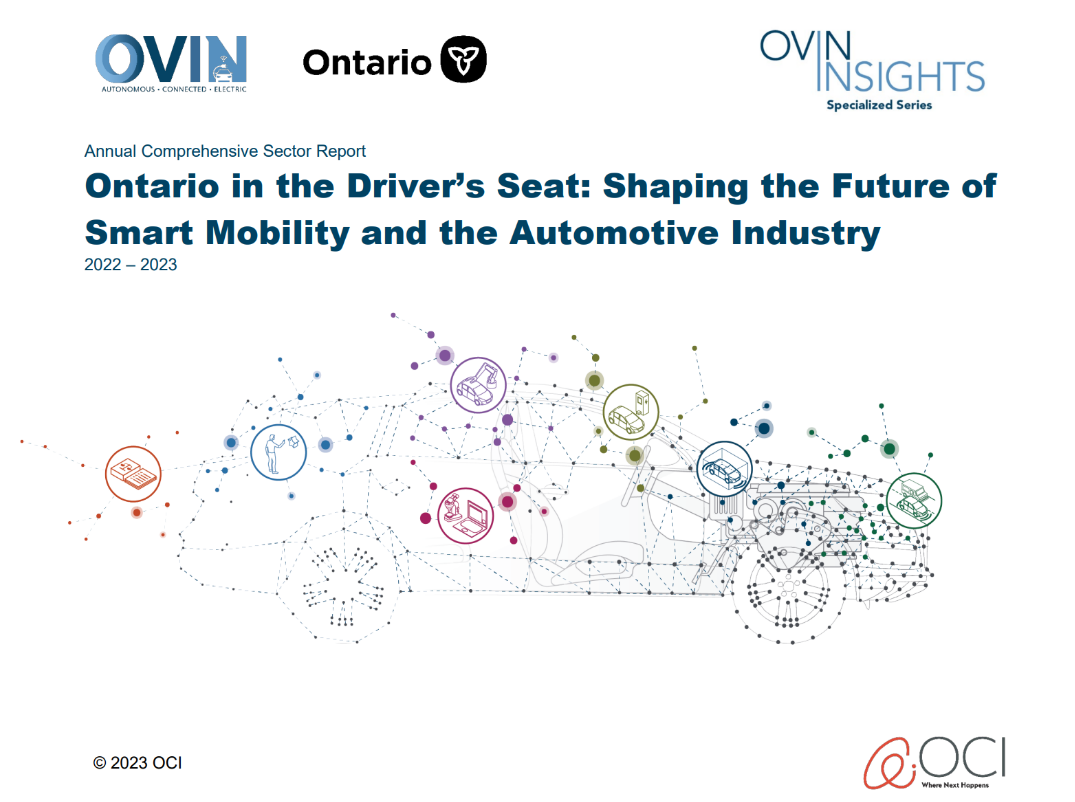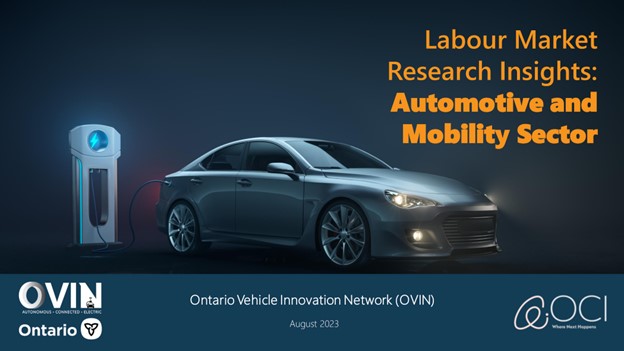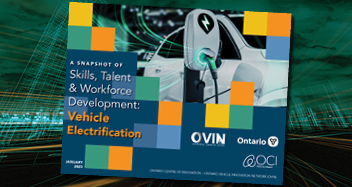Category: Reports

-

Ontario’s Automotive Sector: Economic Contribution and Key Players
This report, which has been developed in collaboration with Global Automakers of Canada, presents an overview of Ontario’s automotive sector, including it’s contributions to the economy, trade and employment. It also provides a summary of the automotive ecosystem, outlining key locations, investments, and actors, including high-level profiles of each of the OEMs operating in the province. Read the Executive Summary
-

Leading the Charge: Ontario’s Leadership in EV Charging Innovation
The electric vehicle (EV) charging industry has expanded rapidly in recent years, along with global ambitions to decarbonize the transport sector. EV chargers are essential to the development of the EV market – without sufficient charging infrastructure, the electrification of transport would not be able to keep pace with demand. This global expansion is pushing technological innovations, with EV charging organizations exploring opportunities for faster charging, wireless charging, and smart charging, and looking at how charging solutions can unlock opportunities for the sector. Read the Executive Summary
-

Ontario’s Unique Position: Hardware Electronics and Semiconductors and Their Role in the Automotive and Mobility Sector
Ontario is uniquely positioned to be a central player in the semiconductor supply chain. The province is home to sought-after technical expertise and key industrial dependencies in automotive and advanced manufacturing. Ontario can play a leading role in the semiconductor space through its robust automotive sector, providing the link between chip manufacturing, EVs, and advanced automotive and mobility technologies. Read the Executive Summary
-

A Spotlight on Skills, Talent & Workforce Development: EV Automotive Repair, Aftermarket and Infrastructure for Electrification
EV infrastructure, aftermarket and repair are the fourth and fifth stages of the automotive Electrification value chain and include the installation and maintenance of specialized infrastructure geared towards EVs, including grid planning/assessment, charging stations as well as servicing for EVs after they have been sold to the final user.
-

A Spotlight on Skills, Talent & Workforce Development: EV Motor for Electrification
As a result of sectoral transformations, various skills and occupations are emerging in the EV motor sector, particularly in areas related to motor design and production, including expertise in design and electrical engineering. The increasing demand for technical skills and abilities in the sector highlights major trends in automation and digitalization within the sector.
-

A Spotlight on Skills, Talent & Workforce Development: Battery Manufacturing for Electrification
Battery Manufacturing is the second stage of the automotive Electrification value chain, and in includes various stages of production, notably, battery cell components, battery cells, battery modules, pack assembly, and battery management systems. This report provides an overview of Ontario’s advancements, occupations and representation of minority groups in the sector.
-

Ontario in the Driver’s Seat: Shaping the Future of Smart Mobility and the Automotive Industry
As the driving force of Canada’s automotive sector, Ontario has been pioneering technology breakthroughs in connected, autonomous, and electric mobility. Home to world-class research institutions, manufacturing facilities, mining companies, technology development sites, and financial services, Ontario fosters a culture of innovation that encourages and enables the commercialization of new technologies and services
-

A Spotlight on Skills, Talent & Workforce Development: Critical Minerals for Electrification
The Province of Ontario is rich in a variety of critical minerals, including copper, cobalt, and nickel, which play a key role in the production and development of advanced technologies, such as electric vehicles (EVs). As of 2022, Ontario has 37 active mining operations, with 10 of them producing critical minerals. The critical mineral industry generates over $3.5 billion in annual mineral production for the province, showcasing its importance and potential for Ontario’s economy.
-

Labour Market Research Insights: Automotive and Mobility Sector
In recent years, the emergence of new technologies in the automotive and mobility sector impacted skills and training that workers require to be successful in the field. Here is a breakdown of major trends in electrification, automation, and digital transformation that are driving training, education, and skills requirements for workers in the sector. These trends and technological advancements have raised upskilling and talent development needs for individuals seeking employment in the sector. In particular, job seekers m ay need to gather an increasingly technical and specialized skillset to fulfill employers’ needs.
-

Driving Towards a Secure Future: Automotive Cyber Security in Ontario
Cyber attacks are becoming increasingly pervasive as everyday processes and products are digitalized. In the automotive industry, cyber security is gaining increased focus as vehicles—which can now feature more lines of code than a 747 jet—become increasingly complex and digital. Organizations across Ontario are playing a leading role in the development of cyber security solutions. Ongoing projects at world-class automotive cyber security research labs and partnerships between the private sector and academia are facilitating Ontario-made cyber security innovations. With these strengths and its thriving automotive sector, Ontario is uniquely positioned to continue pioneering advances in automotive cyber security. Read the Executive Summary or download the full report.
-

Connecting the Dots for Cross-Border Automotive and Smart Mobility Strategies
The cross-border movement of people and goods is a key driver of economic growth. Canada’s ports of entry play a major role in cross-border movement, facilitating both international trade and tourism. As trends towards globalization continue and advances in transportation encourage movement, effective cross-border processes and infrastructure will be increasingly important for ensuring the safe and efficient movement of people and goods. Read the Executive Summary or download the full report.
-

A Snapshot of Skills, Talent & Workforce Development: Vehicle Electrification
As the automotive and parts manufacturing industry transitions to the low-carbon economy and embraces advanced digital and automation technologies, a workforce with a broader mix of skills, training and experience will be required. Some of these emerging skills in the electrification value chain include digital skills, knowledge of advanced manufacturing, software development for vehicle electronics, and battery design. Additionally, skills related to battery and charging technologies, along with EV and infrastructure maintenance, and repair skills are expected to be high in demand. In addition to this technical knowledge, non-technical skills and abilities, such as communication skills, leadership, motivation, a learning mindset, and problem-solving skills will all be differentiating factors for the labour pool.



